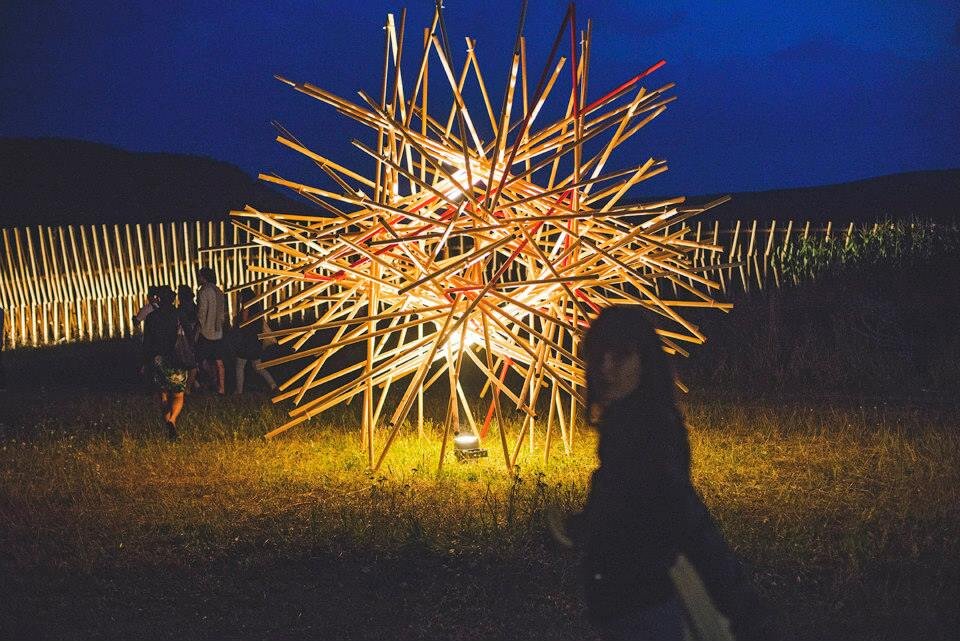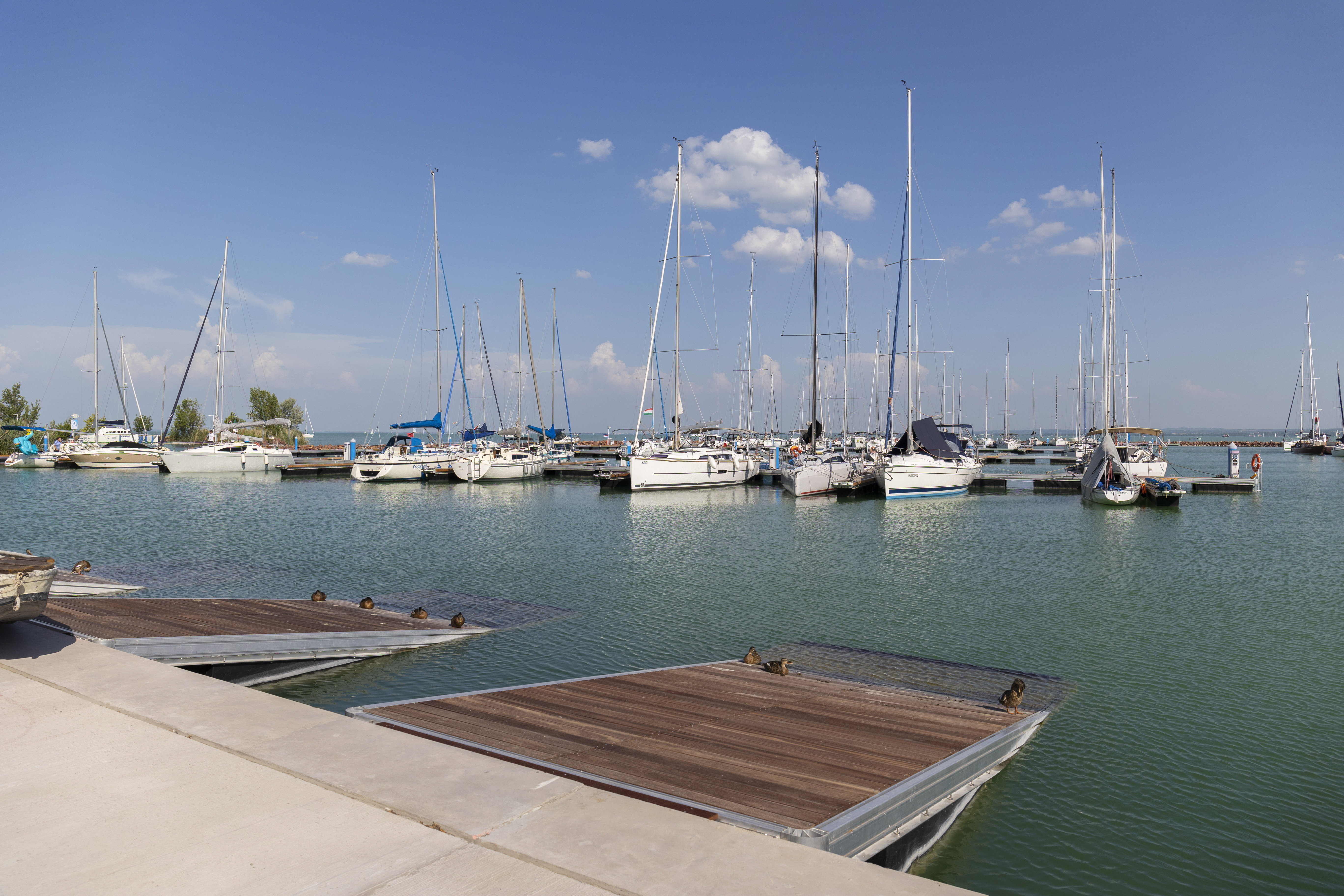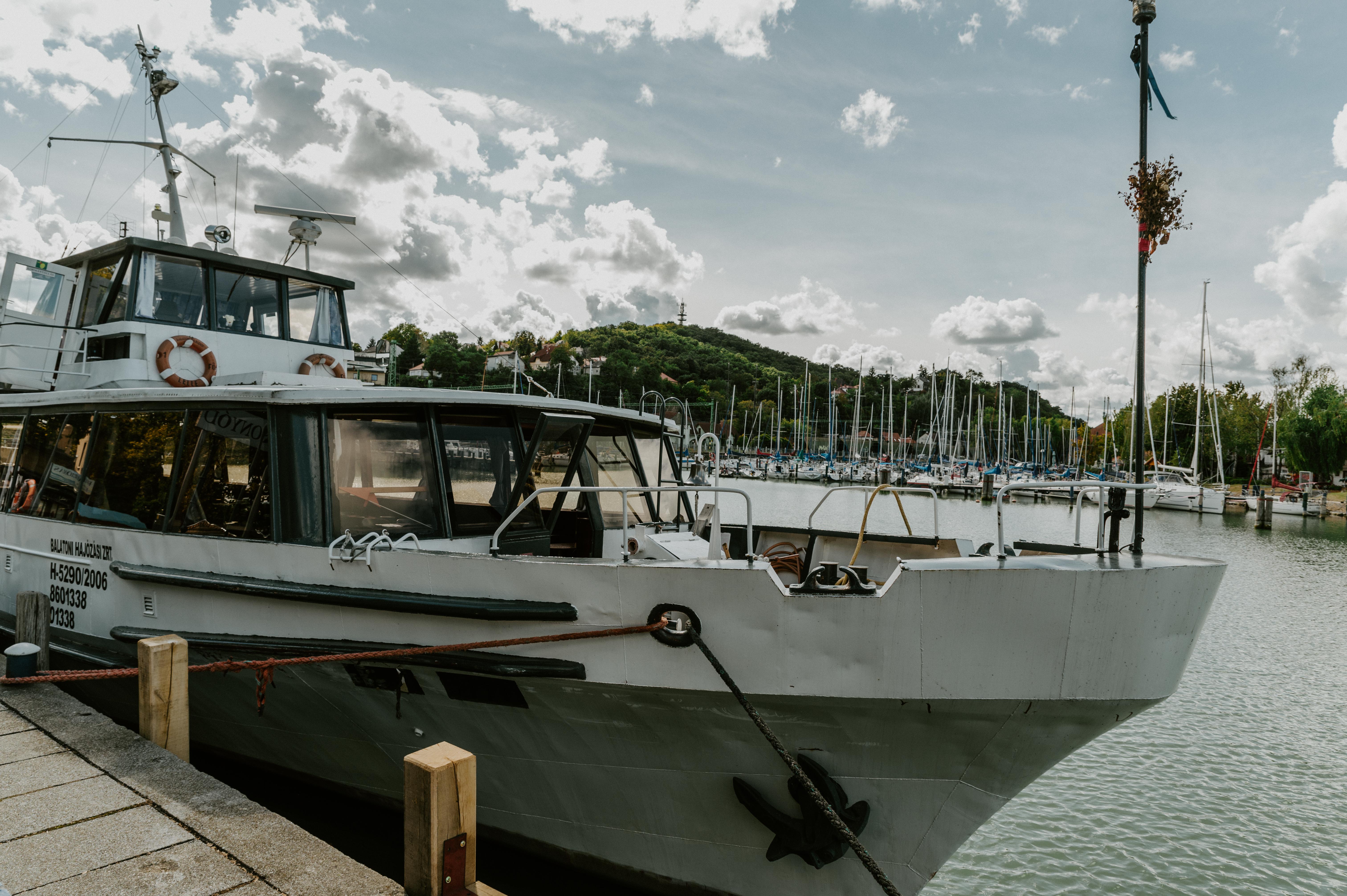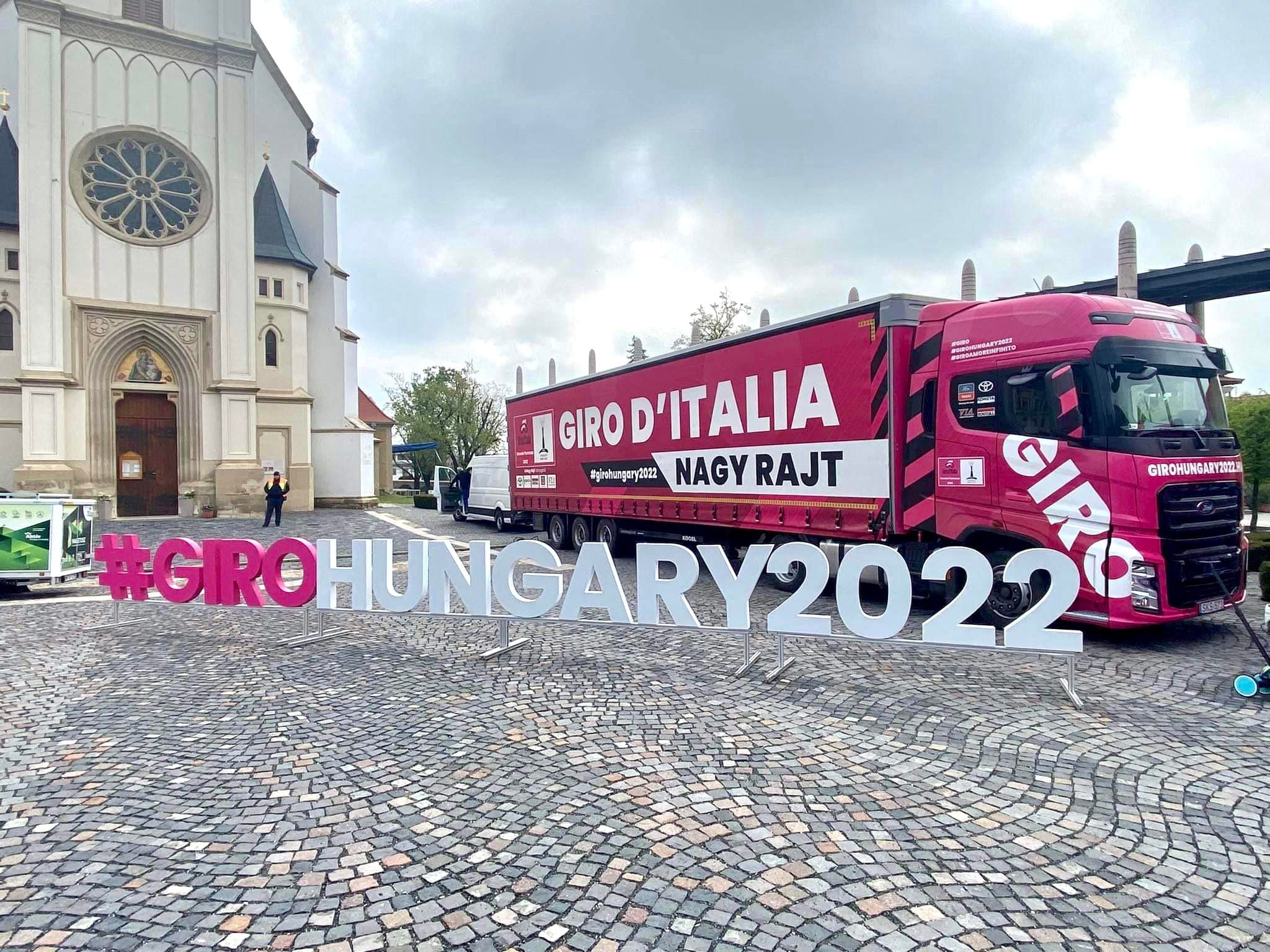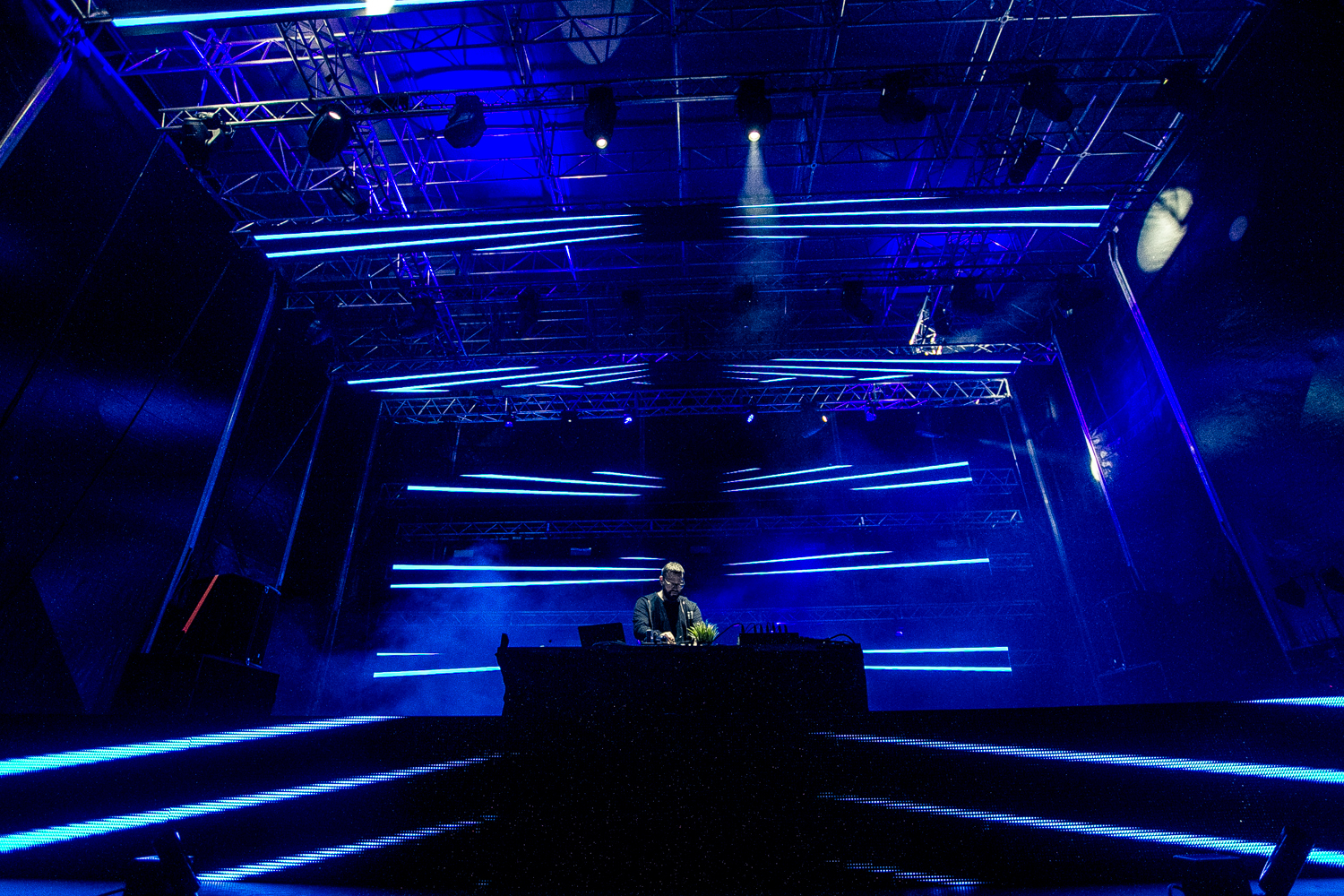Students from places like Spain and Australia arrived to Hungary to co-create with the Hello Wood team and the cream of architects/designers/artists in a tiny Balaton-side settlement. Everyone worked with the same theme, balance. We spent two nights in the fairy-tale garden of Csórompuszta, the place that none left without lifelong memories.

The creative camp of Hello Wood reached its 5th jubilee in 2014. With the help of instructors from the most prestigious universities, 100 artists (at the camp, students are not referred to as architects or designers, but as artists - the editor) created 14 wooden installations on the grounds once owned by the Esterházy-family.
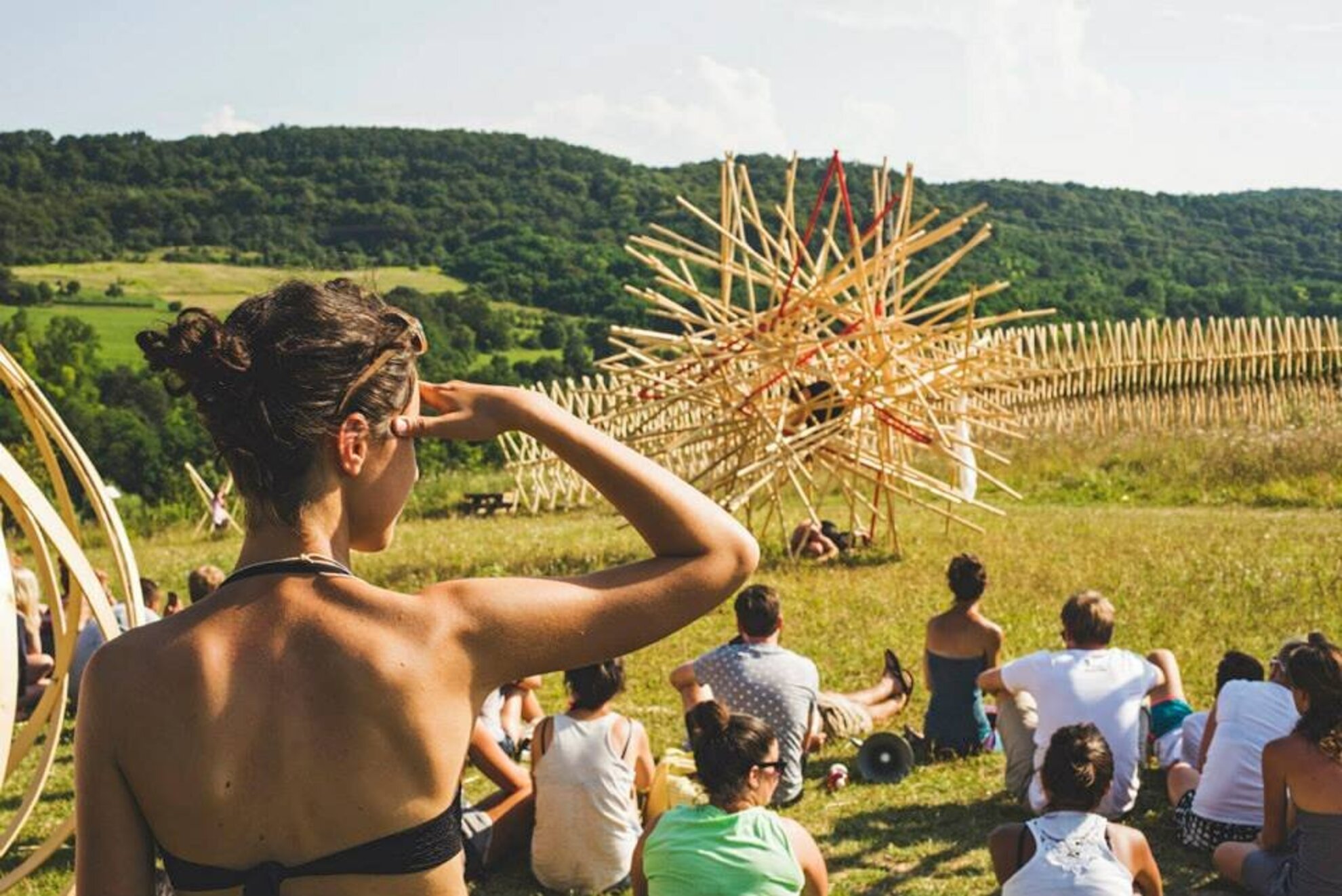
Inspiring fairy-tale garden
We stand on a property a few hundred metres outside Vigántpetend. The garden occupied by tents and half-open wooden houses is trimmed with a few stone buildings, among which we find an old granary, a one-time cellar which now functions as the buffet run by the Janus Winehouse, and a summer kitchen as well. The whole place exudes an odd and picturesque calm, and the bunches of youngsters conversing in a myriad of languages, sawing, brainstorming, doing carpentry, and tinkering, and the installations evolving in front of our eyes transform it all into a one-of-a-kind wonderland. This is a workshop in the nature, where remarkable energies are unleashed by the creative people working on the same plain.
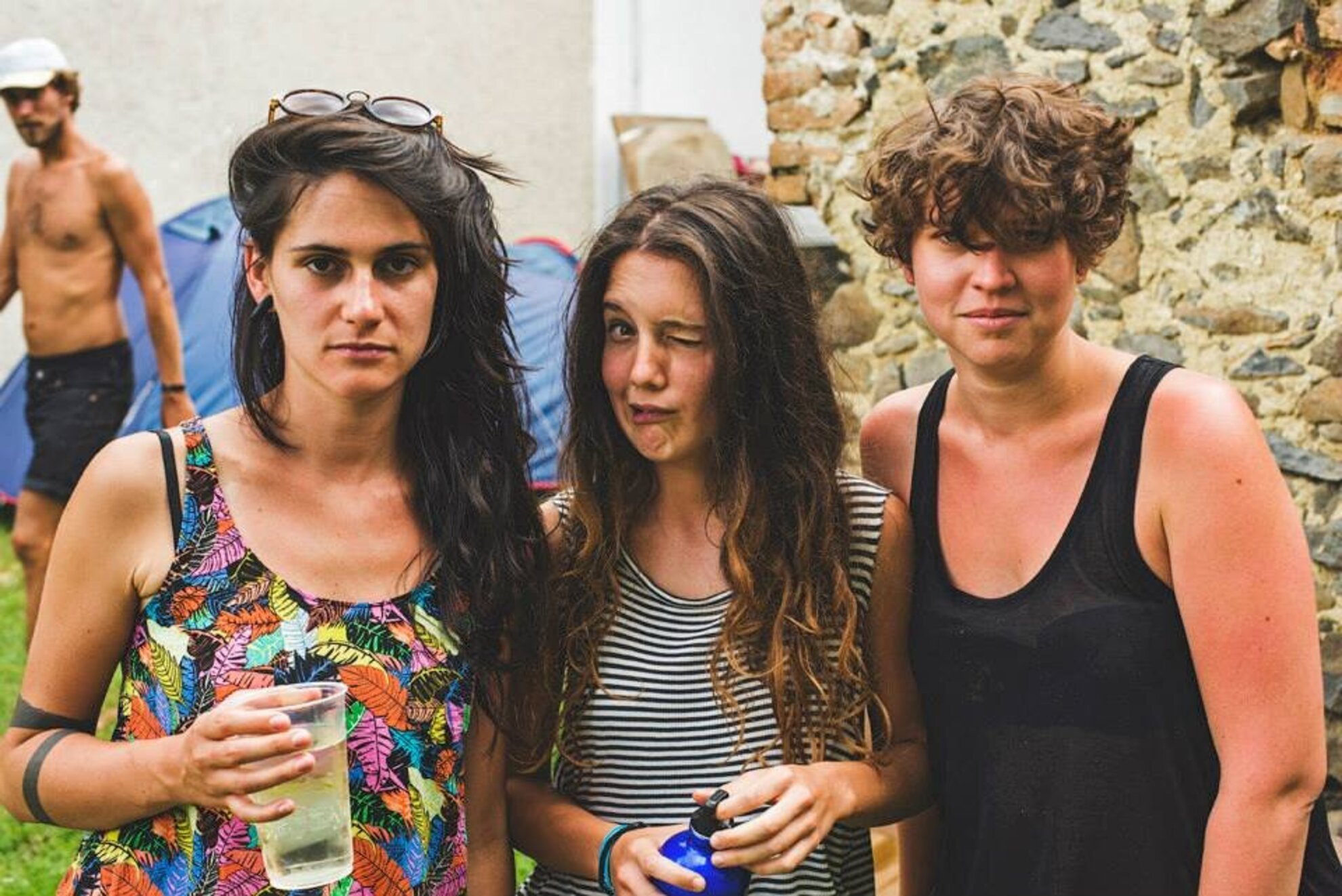
The privileged
The participants had to fit strict requirements: only creative and receptive young people with a convincing portfolio could participate. A part of the project managers were appointed through applications, another part was specifically sought out by the organizers. It was a real honour for the camp that numerous world-famous architects and designers joined the Hello Wood movement this year. The masters did their best to help the youngsters put their theoretical knowledge into practice, even if some of them had never met the buzzsaw before Csórompuszta.
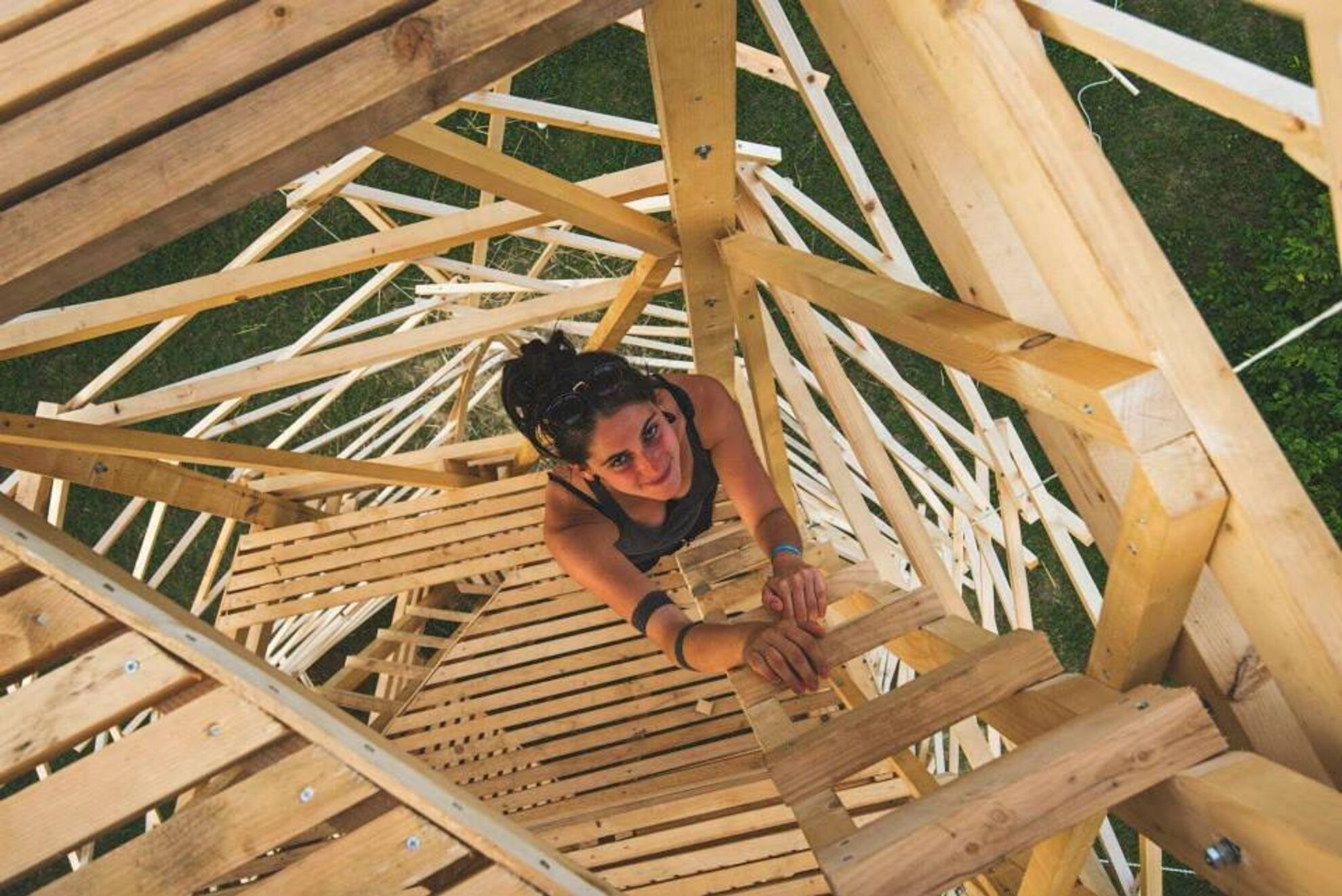
We were witness to several master-student situations and conversations, and the mutual respect lent the camp an extraordinary positive vibe. The teams grew together to an amazing extent, and the project managers were proud to recount how wonderful the joint work was, even in spite of the difficulties. The basic philosophy of Hello Wood is experimentation, which is essential to the freedom of creativity, but which can also become oppressive due to the uncertainty it entails. The "lookout tower" called Labirintus (Labyrinth) was one of the most complex projects of the camp, as the installation by the team led by Spanish tutors was built without the use of screws. The night before the presentation the picture was hardly complete, but the team manage to finish it up with the help of floodlights and halogen lamps.
Common tongue? Art!
It was especially heartwarming to see that there was no rivalry whatsoever in the camp. The creators recognized each other's ideas, workmanship and concept,, supporting each other by a nod, a handshake or a few nice words. The words exchanged were mostly English, as the groups were compiled to include members from all around the world. Oftentimes it were the gestures and the woodwork that did the talking.
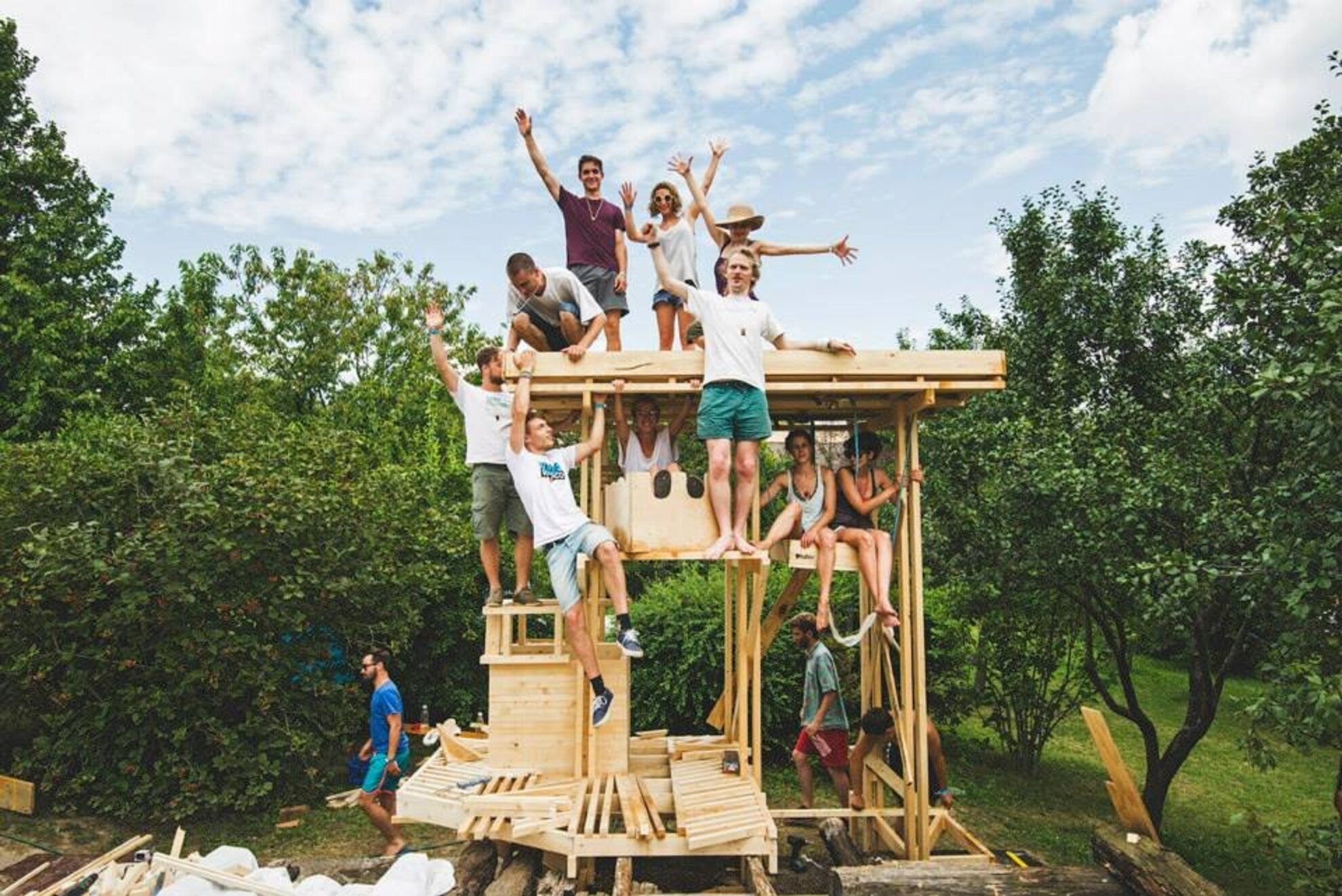
One might wonder why the students of noted universities of architecture chose Hello Wood, hidden in a nook of Hungary - the students we asked answered that the news of the camp spreads by word of mouth and the positive reports are more than convincing. Some of them claimed that despite having bumped into the opportunity by chance, Hello Wood gave them the happiest week of their life.
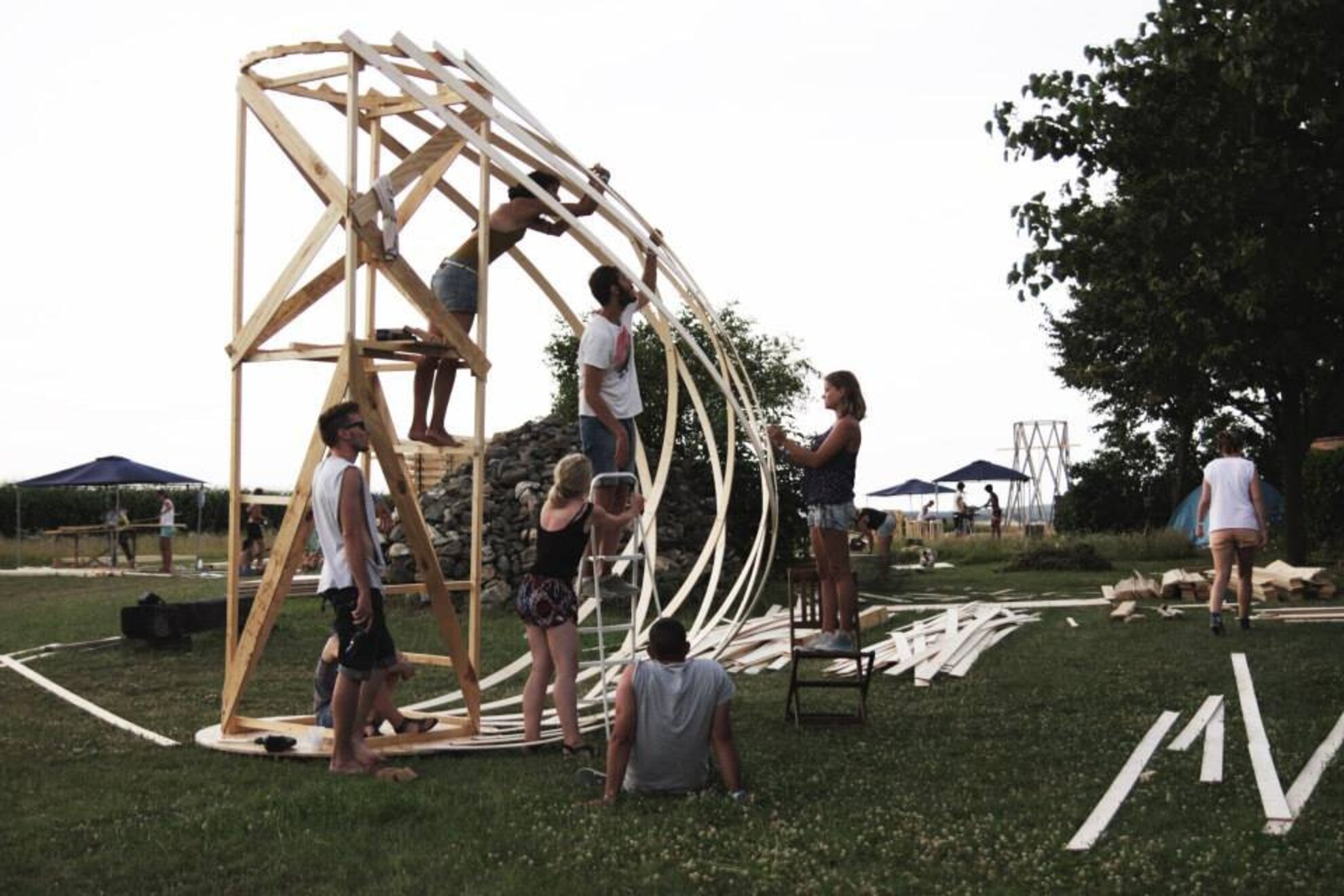
14 projects - 14 messages
Despite having worked 10-12 hours a day under the scorching sun, the young talents did not black out on the final, party night: they danced and celebrated their creations in the light of blinking candles and strings of light until dawn. It is literally impossible to pick just one favourite work out of the 14 projects, because all of them are genial on their own right: one stood out because of the accompanying gag (Spaceship), the other was extraordinary in size (Cornwalk), the third boasted of meticulous details (Accordion), and some (like Fabrick) had a special underlying meaning.

Fabrick was the piece of art with the most mentions at Hello Wood 2014: Lukasz Pastuszka and Jakub Majewski of the Polish MOOMOO and their team built a wooden sculpture using the scarps of wood discarded by the other teams. Team Pastuszka claims that this way the handiwork and creativity of everyone is embedded in Fabrick. A mature thought that does not converge towards the content put behind abstract, overly mystical names and creations.
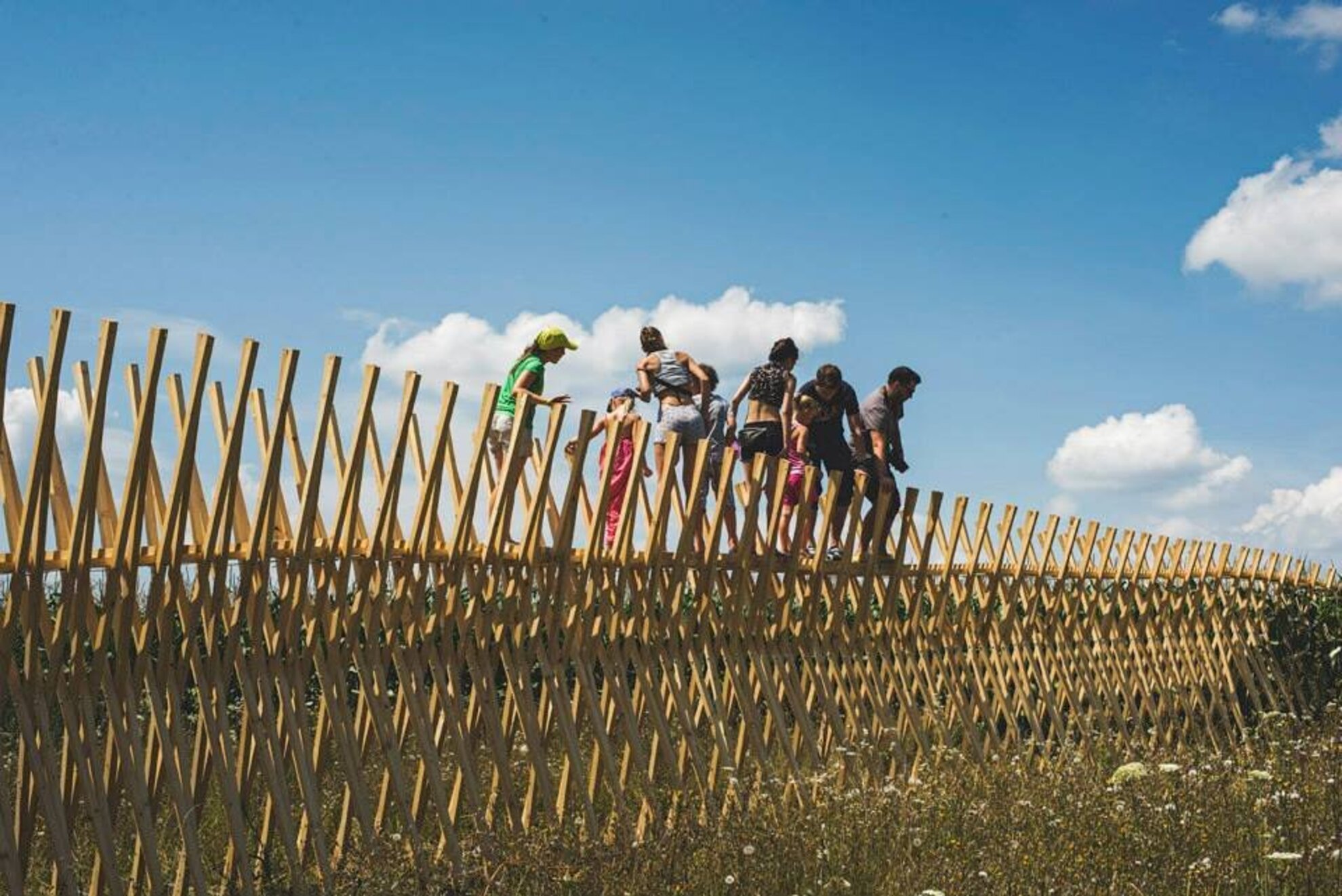
The community building effect and power and the accompanying productivity of Hello Wood is pretty notable, seeing that it managed to realize 14 independent ideas at Csórompuszta. On the morning of the departure, with pieces of wood picked up from the ground in our back pockets, we ran into several farewells, which all centred around a common theme: 'Let's do something together, somewhere, someday!'
The creations are displayed at Csórompuszta during the Valley of Arts, and at the Budapest Design Week and Sziget Festival afterwards.
